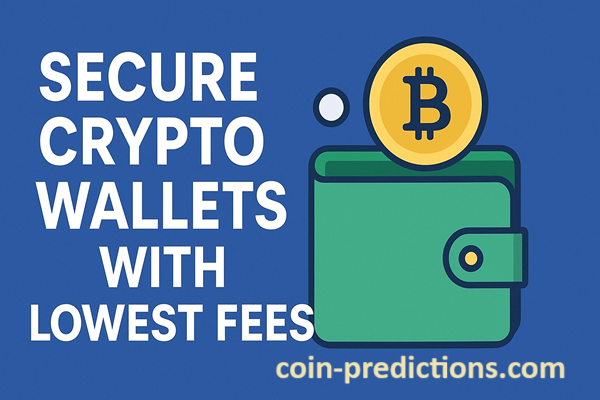How to Read Crypto Charts for Beginners
Introduction
The cryptocurrency market is fast-paced, volatile, and filled with opportunities. But if you’re new, staring at a crypto chart can feel like looking at a foreign language. Candles, lines, patterns, and indicators – it can all be overwhelming.
The truth is: successful traders and investors rely heavily on charts to make smarter decisions. If you know how to read crypto charts, you’ll understand when to buy, sell, or hold. This blog is a step-by-step beginner’s guide to help you understand crypto charts, candlestick patterns, and indicators so you can trade with confidence.
This blog is written for:
- Beginners who want to start crypto trading.
- Investors who need basic chart-reading skills.
- Traders shifting from stocks/forex to crypto.
- Students & learners interested in technical analysis.
- Anyone confused by candlesticks and graphs.
If you’re new to chart analysis, this guide is for you.
Definition & Meaning
Before we dive into the “how,” let’s define what crypto charts are:
- Crypto Chart (Definition): A graphical representation of a cryptocurrency’s price movement over time.
- Purpose: Helps investors track trends, identify opportunities, and predict future price movements.
- Types of Crypto Charts:
- Line Charts – Simple representation of closing prices.
- Bar Charts – Show opening, closing, high, and low prices.
- Candlestick Charts – Most popular; show price movement with detailed patterns.
In short, charts are the language of the market – learning them helps you “speak” crypto fluently.
The Right Time to Use Charts
Crypto charts are useful all the time, but especially in these cases:
- Day Trading: For short-term price movements.
- Swing Trading: To hold for days/weeks based on patterns.
- Long-Term Investing: To identify entry and exit points.
- Market Timing: Knowing when to avoid FOMO (Fear of Missing Out) or panic selling.
By 2026 and beyond, as crypto becomes more mainstream, chart-reading skills will be as essential as checking bank statements.
Resources & Tools for Chart Reading
Where can beginners find reliable crypto charts?
- TradingView – Most popular tool with free & paid versions.
- Binance, Coinbase, Kraken – Exchanges with built-in charts.
- CoinMarketCap & CoinGecko – Price data with basic chart options.
- CryptoCompare – Market analysis platform.
- Coin-Predictions.com – AI-powered price forecasts & predictions.
These resources provide everything from basic charts to advanced technical indicators.
Importance of Learning Crypto Charts
Why should you learn chart reading?
- Better Decision-Making – Charts help you understand if a price is high or low.
- Predict Trends – Spot uptrends, downtrends, and sideways markets.
- Avoid Emotional Trading – Base decisions on data, not hype.
- Maximize Profits – Enter trades at the right time, exit before reversals.
- Confidence in Investing – Eliminate confusion and panic.
Understanding charts is the foundation of becoming a successful crypto investor.
Challenges Beginners Face
Beginners often struggle with:
- Information Overload – Too many indicators, too fast.
- Complex Jargon – Terms like RSI, MACD, Bollinger Bands.
- Emotional Bias – Reading what they want to see instead of reality.
- Short Time Frames – Staring at 1-minute charts and overtrading.
- Ignoring Fundamentals – Forgetting that news and regulations also affect prices.
Solution: Start simple → Learn candlesticks first, then gradually add indicators.
Market Influence on Charts
Crypto charts reflect the actions of millions of traders worldwide. But whose activity impacts charts most?
- Whales (big investors): Large buy/sell orders move markets.
- Institutions: Hedge funds, banks, and ETFs bring stability or volatility.
- Retail Traders: Individual buyers/sellers add momentum.
- Developers & Founders: Announcements (like Ethereum upgrades) impact price charts.
Understanding who moves the market helps beginners interpret chart signals more effectively.
Step-by-Step Guide to Reading Crypto Charts
Step 1: Choose the Right Chart Type
- Beginners should start with candlestick charts – they provide the most detail.
Next Step 2: Learn Candlestick Basics
Each candle shows:
- Green (Bullish): Price went up.
- Red (Bearish): Price went down.
- Wick (Line): Highest and lowest price.
- Body: Opening and closing price.
Step 3: Understand Time Frames
- 1-minute charts: For scalpers.
- 1-hour & 4-hour charts: For day traders.
- 1-day & 1-week charts: For long-term investors.
next Step 4: Identify Market Trends
- Uptrend: Higher highs, higher lows.
- Downtrend: Lower highs, lower lows.
- Sideways: Price moves within a range.
next Step 5: Use Key Indicators
- Moving Averages (MA): Shows overall trend.
- Relative Strength Index (RSI): Identifies overbought/oversold levels.
- MACD (Moving Average Convergence Divergence): Shows momentum.
- Volume: Confirms trend strength.
Step 6: Recognize Chart Patterns
- Head & Shoulders: Trend reversal.
- Triangles: Breakout patterns.
- Double Top/Bottom: Strong reversal signals.
final Step 7: Combine Charts + Fundamentals
Charts give signals, but combine with news, regulations, and adoption trends for the best results.
Why Choose Us – Coin-Predictions.com
At Coin-Predictions.com, we make chart reading easy for beginners by offering:
- AI-powered predictions with easy-to-read charts.
- Beginner-friendly blogs & guides.
- Step-by-step forecasts for Bitcoin, Ethereum, and top altcoins.
- Reliable data to avoid fake news & market manipulation.
- Community support for learning and growing.
If you’re a beginner looking to master crypto charts, our platform is your best learning partner.
10 FAQs – How to Read Crypto Charts
1. What is the best crypto chart for beginners?
Candlestick charts are the best as they show opening, closing, highs, and lows in a simple way.
2. Do I need paid tools to read crypto charts?
No, free platforms like TradingView and CoinMarketCap are enough for beginners.
3. What time frame should beginners use?
Start with daily or 4-hour charts for less noise and clearer trends.
4. Are chart patterns reliable in crypto?
Yes, but crypto is highly volatile. Use patterns along with indicators and news.
5. Can charts predict Bitcoin and Ethereum prices?
Charts don’t guarantee future prices, but they help identify trends and probabilities.
6. What is RSI in crypto charts?
RSI (Relative Strength Index) shows if a coin is overbought (70+) or oversold (30 or below).
7. Is chart reading useful for long-term investors?
Yes – even long-term investors use charts to pick the right entry points.
8. How can beginners avoid mistakes in chart reading?
Start simple, avoid too many indicators, and don’t rely on emotions.
9. Where can I practice crypto chart reading?
On TradingView, Binance, and Coin-Predictions.com.
10. Is chart reading alone enough for crypto trading?
No – combine charts with fundamental analysis and risk management for success.
Final Words
Learning how to read crypto charts is like learning a new language – once you understand it, you gain power over your financial decisions. Beginners should start with candlesticks, trends, and basic indicators before diving into complex strategies.
If you want AI-driven insights and simplified chart forecasts, explore Coin-Predictions.com today.
👉 Start your crypto journey now – charts don’t lie, they tell the story of the market!



